Virtual Exhibition
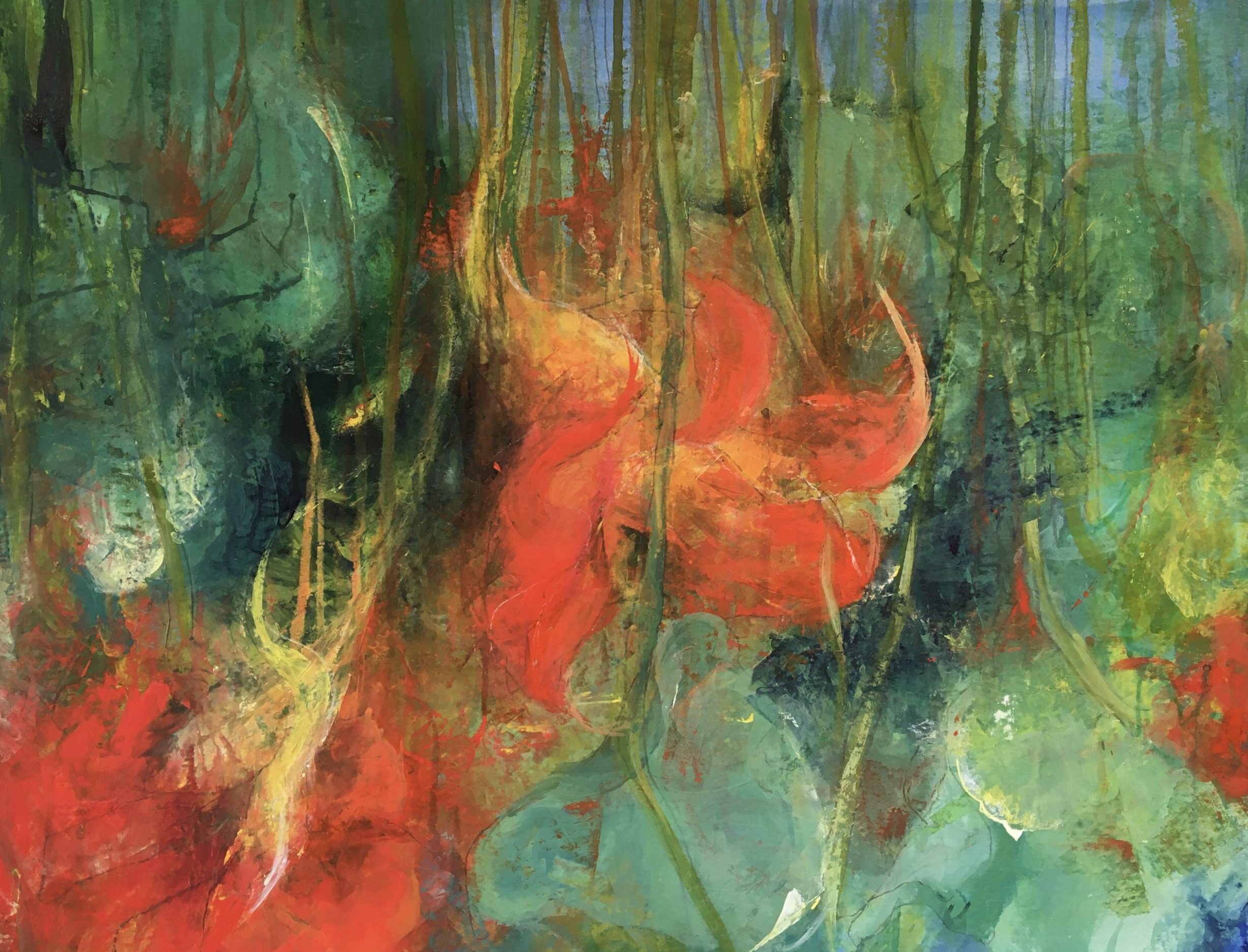
"a flash of red across my path today
Intense and real
A petal perfectly formed, without flaw
But the moment of its purpose had passed
And there it lay."
“Someone coloured my world today…”
“Someone coloured my world today…”is the culmination of my 12 years study towards a BA Painting (Hons) Degree with the Open College of the Arts. The OCA is a distance learning arm of the University of the Creative Arts (UCA)
The body of work which forms the exhibition had its beginning over two years ago with the news of the burning of the Brazilian rain forest. Following this devastation of one of the earth’s vital resources and extraordinary beauty were the months of burning throughout Australia as the wild fires devastated vast areas of the country with unimaginable consequences for the wildlife. My work began in sadness and horror at what has taking place but as I worked through the ideas , what emerged was a desire to raise awareness of the incredible beauty and magnificence of what we have and to preserve it. We don’t destroy the things we love and I see a real validation in encouraging people through my work to become more aware of the natural world. My paintings seek to celebrate the earth’s beauty, mystery and vulnerability. We are certainly at a time when the world needs hope and joy and more love and I believe that art has the capacity to provide a glimpse of these qualities. The three line poem from which the title of the exhibition has been taken is a gentle reminder of our responsibility to care for the earth at this crucial time of climate change.
The key is ‘listening’. Listening involves a stillness and a connection with what’s happening around us. This connectedness with the natural world creates a different kind of awareness. Simply looking with our eyes places the viewer outside – an onlooker – to the natural world, whereas listening, feeling, smelling, waiting, allow for a deeper sensory perception to happen. So listening to the sounds of the natural world and what it is saying to us brings about a new relationship of unity and closeness. There is a dialogue! My expectation is that this connectedness with the earth will bring about an awareness of a world beyond our field of vision, resulting in a higher sensitivity to the earth’s needs.
This level of connectedness is what I search for in painting. Sometimes they are pure abstraction, sometimes they hover between abstraction and representation.
The inspiration for the paintings comes from the garden as this is the only space available during the lockdown imposed by the pandemic. Listening to the sounds and seasons as they reveal their own unique appearance has provided endless moments of understanding and delight. The garden has become a place of quiet stillness during this period of seclusion where the birds have been able to take back the skies and the natural beauty of the garden thrives. The essence of my garden experience is always expressed in colour! Roy de Maistre, an Australian artist, expressed it this way, “Colour is…the very song of life…the spiritual speech of every living thing.”
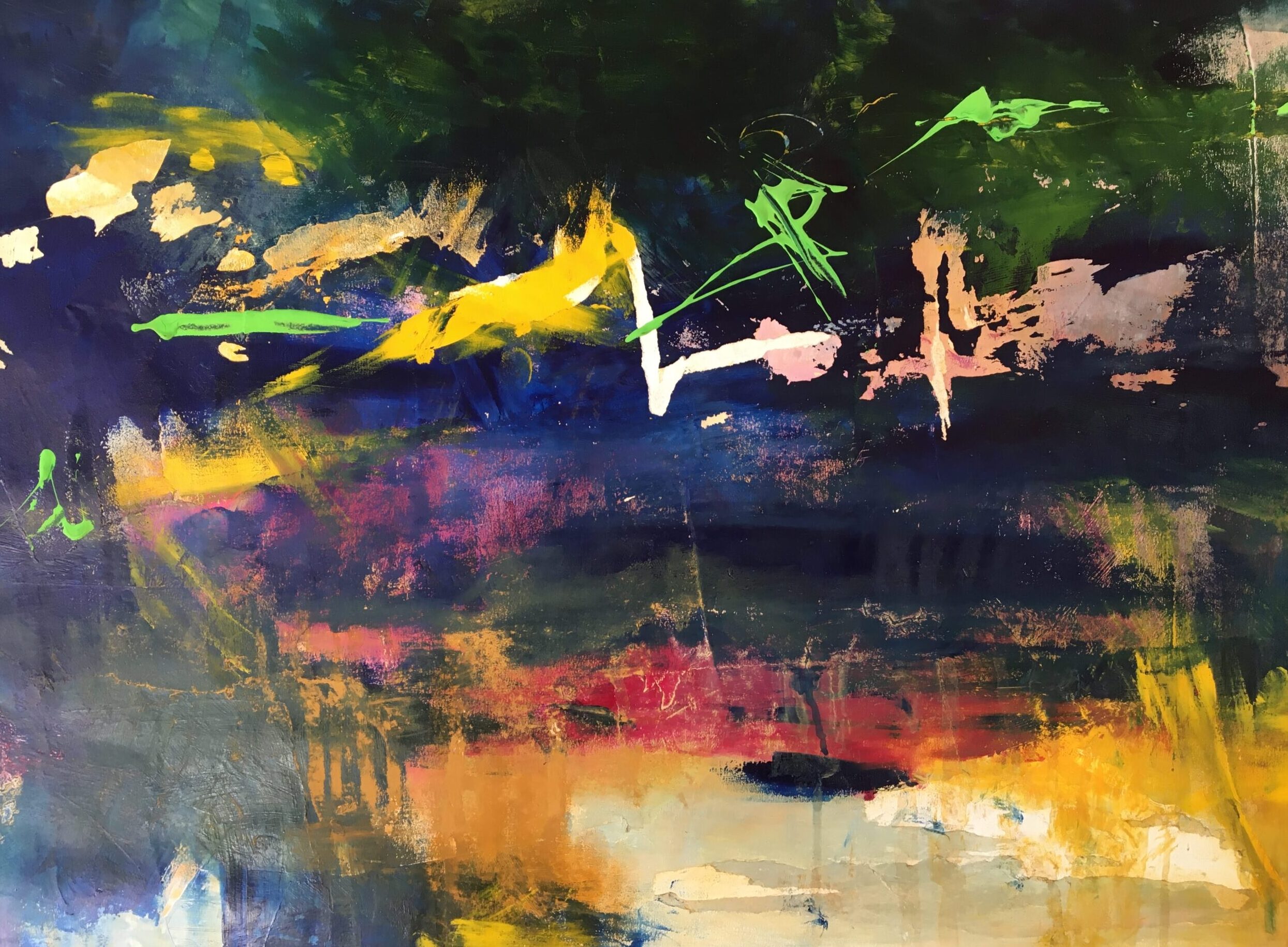
"Still layer on layer Still colour and knowing
Is it part of now, the present?
It has to be- Layer on layer…"
Inspiration For My Paintings From My Garden
Drone Images taken by Horizon Imaging Ltd
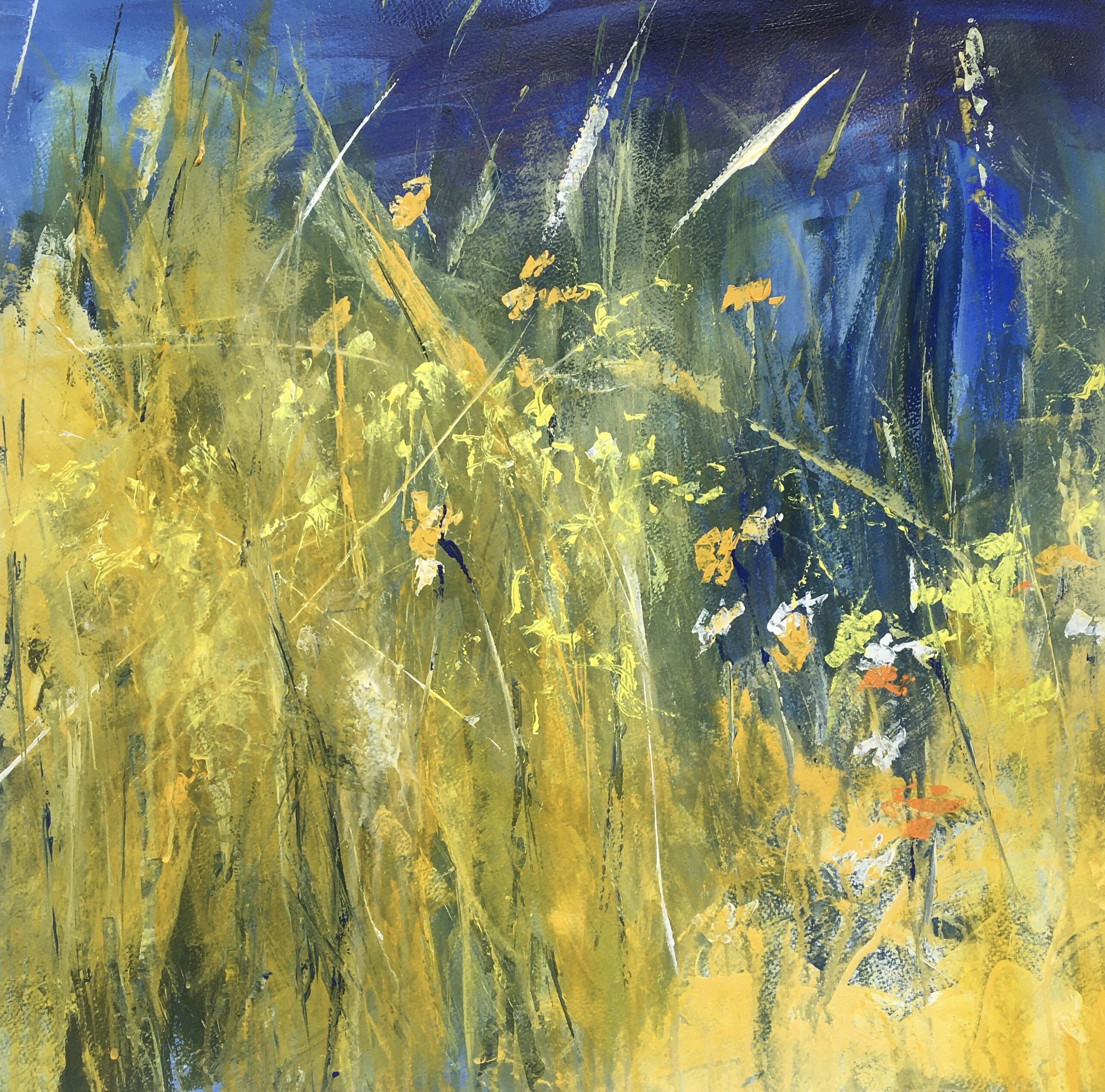
"…and the day dawned with such ferocious newness –
Flooded with ideas
Everywhere, sounds!
There was an urgency with it….I couldn’t stop to look."
I wonder why that experience held me. A dead leaf on a path at the start of autumn – hardly a momentous moment! But still it held me. I felt something was drawing me back to another time, another place. How can colour have this effect? This began a period of deep personal exploration for me about identity and ‘otherness’ and its links with memory and place. This exploration of place has been a powerful preparation for this body of work in the exhibition as well as deepening my rethinking about the purpose of my work.
How evocative is colour! I’m remembering the conversation between John Berger and John Christie in the book, “I Send You This Cadmium Red”, when Berger is talking about darkness. He writes, “When the sun set, the forest was filled with blackness, not with the colour black, but with the mystery, the invitation of black. Blackness as in a black coat, as in black hair, as in a touching you didn’t know existed.” ‘A touching you didn’t know existed’ – that is what happens when I see certain colours. Orange , yellows, intense blues! Is it simply memory that is awakened by seeing these colours or something deeper? Even though I have lived more than half my life in the UK, still something links my identity to Australia and this is evident in my painting and drawing.
Recent trips back to Australia have confirmed this insistent voice. On one of these trips I visited a small outback town in the plains of New South Wales called Sofala and its rawness had a profound effect. I felt an instant emotional response. There was a starkness and honest beauty to the old galvanised iron walls of the café where we stopped for coffee and the same qualities were reflected in the openness and unaffected attitudes of the people I met. It captured something of a forgotten space. In the book, ’Place’ by Tacita Dean and Jeremy Millar, she writes, “Place is something known to us, somewhere that belongs to us in a spiritual, if not possessive, sense and to which we, too, belong.”
She goes on to explain, “ I played with many ideas about place… but in the end I realised it can only ever be personal. Place can never be generalised….; it will always be connected to somewhere in our autobiographies. It is an amorphous ungainly feeling that enables us to articulate feelings of familiarity …, and for the most part it is better left ignored because it can be unbearable .”
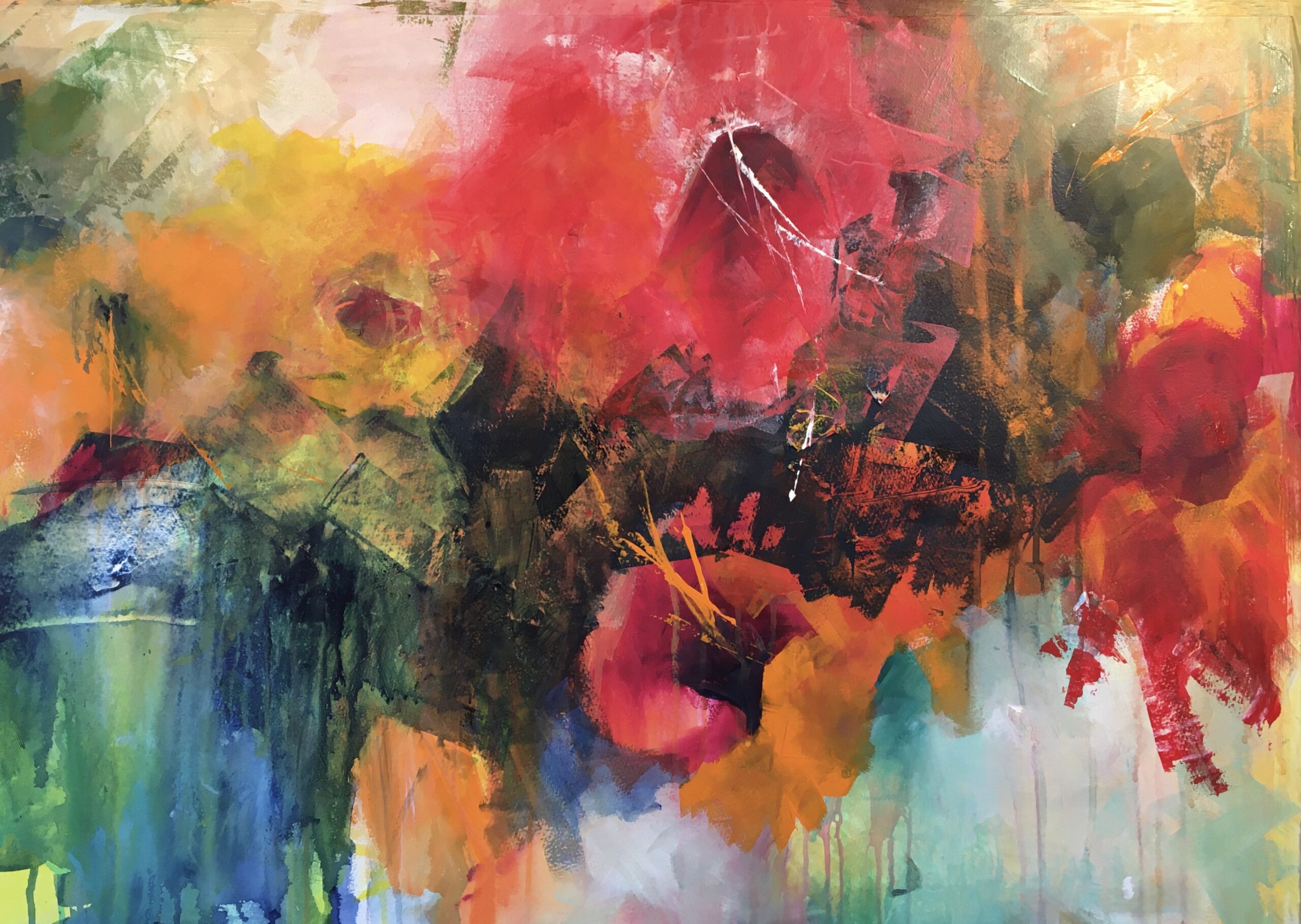
"Uncompromising Without apology
Yellows, orange, reds, burnt in the heat of the occasional sun!
A moment… Hope Purity
Where does it take me?
Feelings of place and belonging seem complex but so important to understand. It is all about responding to a much wider sense of identity. Tacita Dean explains it this way, ‘Just as we may derive visual pleasure from looking at a particular picture, or a particular landscape, a more profound engagement must depend upon more than the visual, upon those things that remain invisible.”
In taking up this point about ‘depending…upon those things which remain invisible’, I’m reminded of the work of Harold Hodgkin and the part which ‘memory’ plays in his approach to painting. The point I’m thinking about here are his portraits because his method of working beyond the visual allowed his images to encapsulate experience, not just what the eye was seeing. In a recent exhibition at The National Portrait Gallery, before his death, called ‘Howard Hodgkin Absent Friends’, the question ‘What is Portraiture?” became paramount. Is the portrayal of an individual figurative, the visual appearance or is it rather an accumulation of experience. Paul Moorhouse, Senior Curator of Twentieth Century Portraits and Head of Collection Displays, writes “We attempt constantly to fathom the significance of the world we inhabit. We do so by interpreting its visual characteristics. The appearance of things is our constant point of reference. However, it is plain that the reality of things is not entirely – if at all- a matter simply of how they seem. To grasp the world and its occupants in a fuller and more complete way, we must reach beyond the merely apparent.”
In the colours selected and by including suggestions of the sitter’s visual style, Hodgkin has then invested the added element of his own emotional experience of the individual as lifetime friend.
I can feel a real resonance with this description of Hodgkin’s portraits, as Moorhouse describes, ‘transcend(ing) the tyranny of fact’ The raw material of landscape, people, voices and sounds of Australia get transmuted through memory and imagination in my work and it is through abstraction that a visual language takes form. Memory plays an important part in this process. Translating memory and emotion into painting was key to Hodgkin’s early work as he worked to develop his own personal language by how paint was applied to the canvas, the bold colours and shapes in the compositions. In an interview in 1981 he said, “you have to make your own language, it has taken a very long time…I wish my earlier paintings could have contained more, but I wasn’t able to do it.” This gives some indication of the struggle the artist had in finding the means of expressing emotion in his work.
These words came to me one day as I finished painting and I began to understand how place and identity fuse together. Is it possible that my images, on the surface recalling Australia, are actually self portraits? Is this where you can find me?
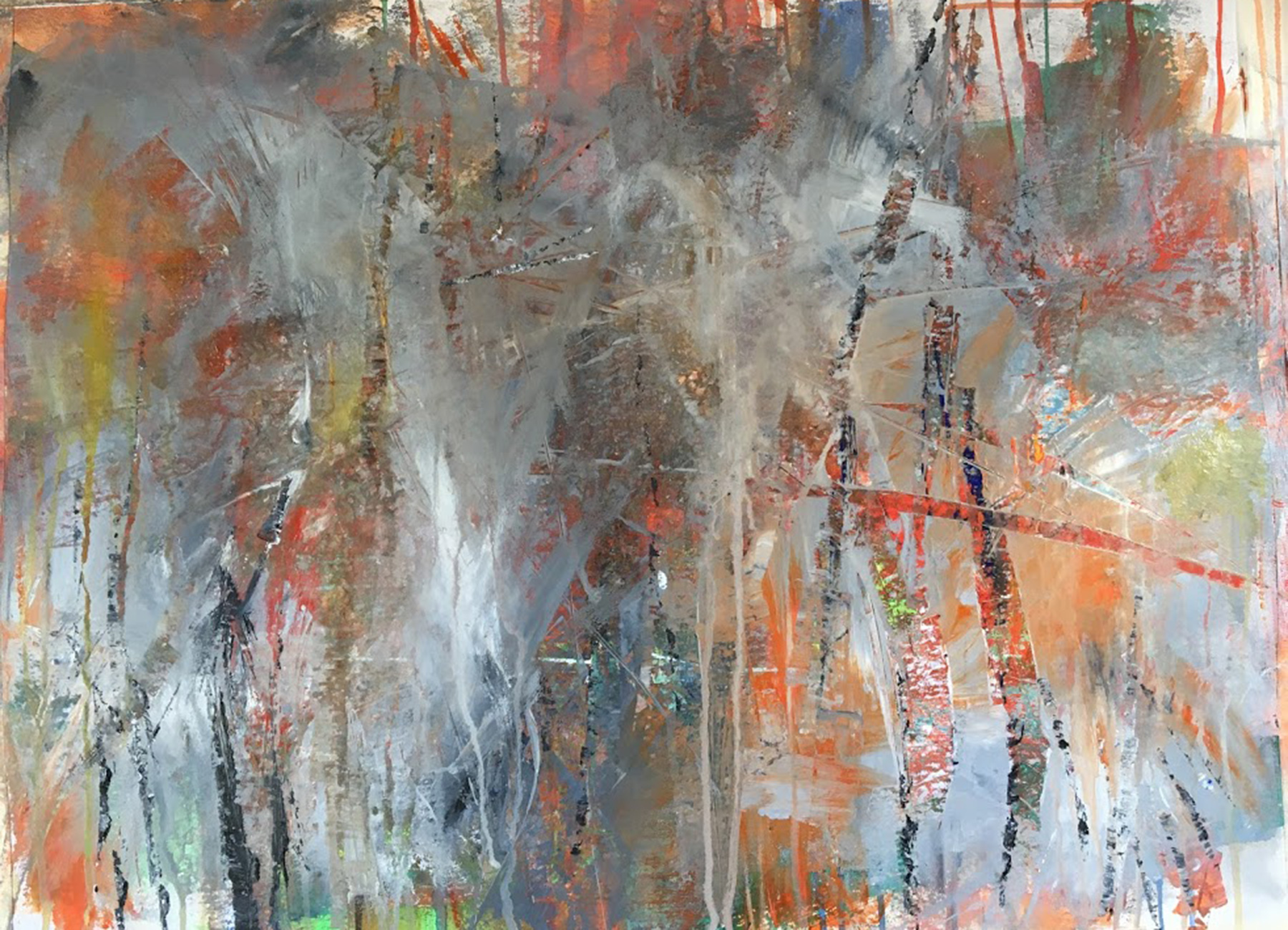
"The secret mystery hidden in the transforming heat.
The mystery of the hidden spaces
Renewal, re-awakening
Life forever new……."
I certainly am in the paintings. The process of my work is expressive of the feelings and emotions I have about Australia. In the book, ‘The Paintings of Joan Mitchell’ Jane Livingston talks about the transformative search that Mitchell constantly struggled for in her work – …”she kept insisting that ‘feeling a place, transforming a memory’, recalling something specifically from experience, with all its intense light and joy and perhaps anguish, was what she was doing.”
Siri Hustvedt in her book, ‘Mysteries of the Rectangle’ , in describing Mitchell’s process of working comments “that her claim that she carried her landscapes inside her makes sense…” She goes on to describe, “Mitchell wanted to hold on to her landscapes, to seize the ‘out there’ through the ‘in here’, to depict the mysterious flux of perception, not as it’s immediately seen, but as it’s remembered and felt in the body. That is the flux of being.” Hustvedt finishes with the comment, “The pleasure I find in them has, as she said, “something to do with being alive.”
I feel the same urgency as I paint or draw. I love the feel of the paint and the touch of the pencil on the paper. All that I internalise about Australia seems to flow through the movement of the paint and the selection of colours. I try to start with the brush but I always end up with my hands in the paint. I try to use a subdued palette but it is always the warmth and clarity of the Australian light which dominates. It seems that only through the actual physical process of the work can I fully express what the natural world whispers to me.
My work now has developed out of a deeper understanding of identity not as a static condition embedded in one place but one that is continually evolving. Stuart Hall, a cultural theorist and author of ‘Cultural Identity and Diaspora’, suggests that individuals are not limited to just one identity. There is one identity which is based on a shared culture, a unity that comes with belonging and there is another which is always evolving through the continuous involvement of history, culture and experience. Hall, in his essay in 1990, writes, “Identity is not as transparent or unproblematic as we think. Perhaps instead of thinking of identity as an already accomplished fact, which the new cultural practices then represent, we should think instead of identity as a ‘production, which is never complete, always in process and always constituted within, not outside, representation.’
I see this evolving taking place in my painting now. The focus of my present work aligns with another migratory species – birds! I have always had a fascination with the sounds of birdsong and it was during both return trips to Australia that the sound of the birds symbolised everything about identity and place for me. The act of ‘listening’ has remained a key element in my work and gives me a connectedness with the landscape, a connectedness beyond ‘seeing’.
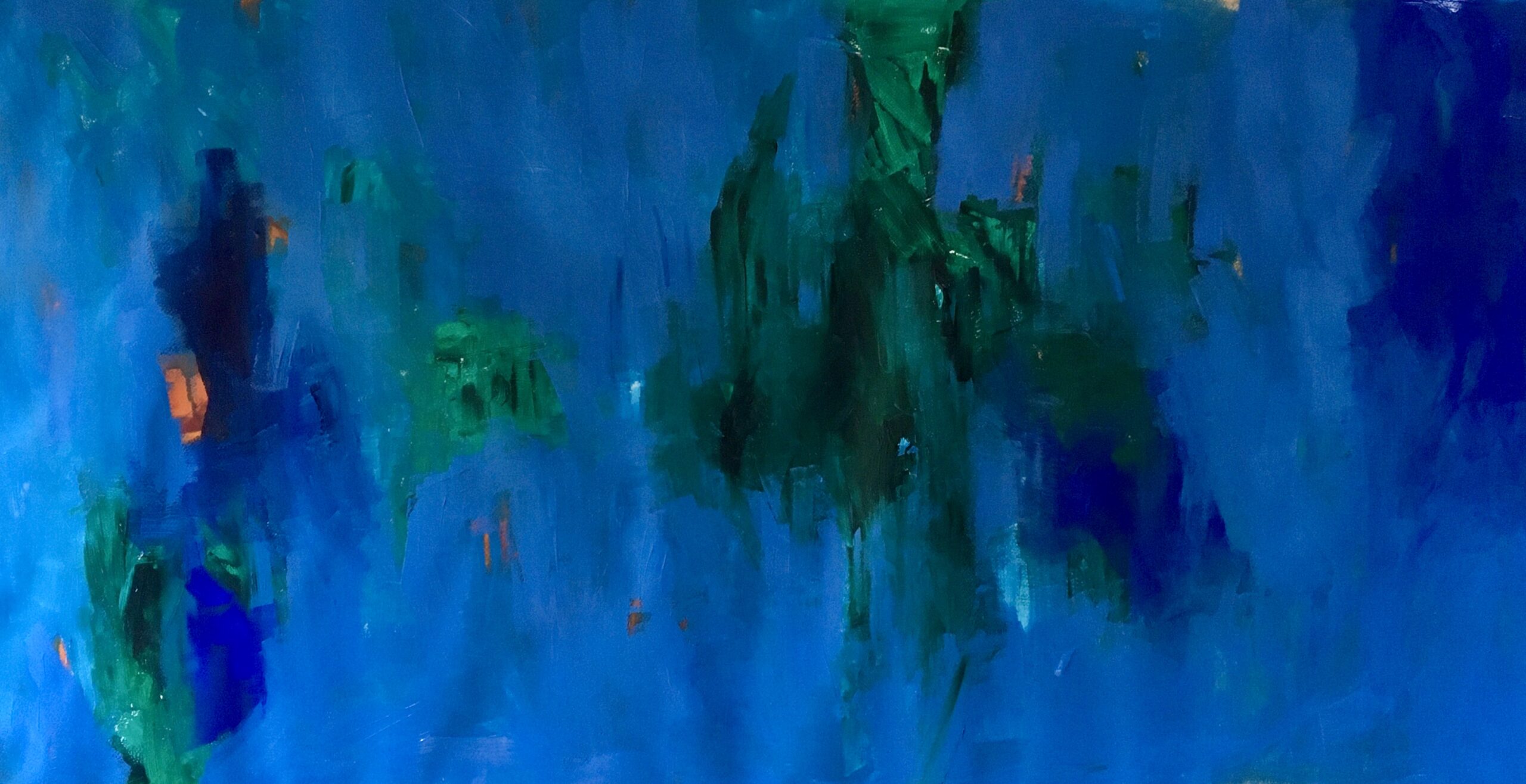
"DUSK
Complete stillness
Not a hint of movement
The yellow of the bush is the only sound in the garden-
And it is shouting as the final shaft of sunlight lingers over it!"
However, my final work this year has brought about the transformation and resolution about place I have been looking for. The continuing interest in sound and memory have developed now to include the birds which I live with each day in my English garden, thus bringing together a new expression of ‘place’. I am discovering that when the lines of difference fall away and place begins to reside not in a physical landscape but through the imagination then any sense of ‘otherness’ cannot remain. The birds and their sounds may be different, but they all bring for me a sense of delight, a feeling of belonging which I can capture through my art. So, a final word from the book, ‘Place’, seems to encapsulate the conclusion I have come to. Thinking of the incredible species of birds from Australia and from England, “They are both beautiful works of art, certainly, as the forest is, and they invite our attention, yet they are both so much more than what we see. Perhaps this is why art, like place, needs a little more time, a little patience, and no little sensitivity, in order that we might then become aware of what else it is, beyond that of which we are first aware. Not that every place that is made is art, however; but to make art…is to make place.”
‘Place’ isn’t a landscape or a country or even a memory for me now. It is something which exists in a far more personal and lasting space, a space which is not subject to influences beyond my control, people or events. My art practice has provided the space for me to understand my ‘otherness’ as a migrant in a way which eradicates the tension and the difference. My space is my consciousness, continually evolving and I identify with that place more and more through the process of art. Jess X Snow, a filmmaker, poet and artist who works with previously incarcerated families, migrant and indigenous youth communities to produce art and poetry., writes “Creativity lifts us across boundary lines to a future that does not yet exist, where home is not a place bound by borders, but a place where imagination thrives.”